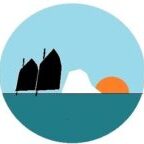DESERT, BUSES, EARTHQUAKES AND SLEEP DEPRIVATION (7 APRIL 2014)
It seems like some time ago that we left Valparaiso and her higgledy-piggledy delights behind us. The early departure from our hostel got us onto our bus to Santiago with time to spare, and after a short (2 hours counts as short) journey we were in the Chilean capital. Then, within an hour, we were on the road again for the longest bus journey either of us has ever contemplated. The 28-hour trip would take us north into the Atacama desert, and through many fly-blown towns to Arica, the border town and apparently surf-mecca just 20km South of the Peruvian border.
The bus journey itself was tough – it soon became evident that the aircon was not working, and we were sitting right at the back of the bus (seats which had previously proved very successful for us), above the engine. It got warm. The aircon came on briefly, breathing a few whisps of cool air into the bus, which did not reach us, then stopped, never to start again. The next 20 hours were spent in battle with other occupants of the bus to open windows (tended to overcome their keepy-openy latches and rattle themselves closed) and the skylight, which provided a nice cool (dust-laden) draught, but was constantly being closed or otherwise interfered with by other passengers or the steward. Nobody seemed to notice the puce, sweating pair of gringos in the back row as they quietly expired in the heat.
Added to the discomfort from overheating was the delight of having a slightly hyperactive child in the seats in front, who seemed capable of remaining quiet and motionless when glued to a tablet playing Barney the excruciating purple dinosaur videos at high volume. For those of you that may not have had the pleasure of the Barney experience, I would advise an educational visit to YouTube, and then imagine it in Spanish at ten o’clock at night, in a crowded, overheated bus. Both of us on occasion were physically restraining each other from putting the child, his parents, and of course Barney, out of our misery.
The offenders got off the bus at some desert shithole in the early hours of the morning, as did many of the other passengers, leaving us in sole charge of the ventilation arrangements. Even so the steward decided that we had returned to a healthy enough colour and the puddles of sweat under our seats had evaporated sufficiently, so kept coming back and closing the skylight. On one occasion I did give him a death stare and mentioned that it was really quite warm and if he knew what was good for him, and didn’t want two melted gringos on his hands, he would open it again (if only my Spanish were actually that good), at which he looked slightly perplexed but did as we asked.
We arrived somewhat bedraggled at Arica bus station, and got a taxi to our hostel. Well, as soon as the driver had stopped to ask 3 different people where it was, he got us there.
It was in a section of town right on the beach in a low-lying area, which would soon have more significance than we could yet imagine. We rang the bell and were greeted by the lovely French lady owner, Jenny. In fact we were the first guests she had booked in after a week off, so despite booking into a 4-bunk dorm, we had it to ourselves. We quickly stripped off and jumped into the showers to purge ourselves of the last 30 or so hours of travelling.
Having a French hostess had the fun consequence that I could now converse in three separate languages, two of which Stu only has a basic knowledge of. I can’t say I made too much of this, but I did enjoy practising my French for a change!
We then popped out to explore the town for the late afternoon and early evening, the plan being to have a few quiet beers, something to eat and then head back to the hostel for an early night. We had just finished our substantial plate of food in what claimed to be a “historic restaurant” but was ruined by the awful selection of music being played and its owners’ evident efforts to turn it into a trendy bar, and were supping our final beers, when the building went all wobbly. I checked the label on the beer bottle – nothing unusual in the strength of the beer. However, the initial gentle shaking got more violent, and we were beckoned towards the back of the bar, which was an extension to the older part of the building (we were the only customers, and on the first floor). As we looked up, the corrugated roof was shaking itself apart to reveal the stars in the beautiful desert sky; chunks of plaster were falling from the ceiling above the table where we had previously been sitting; finally, thankfully, the power went off and the music stopped. The bottles which were artistically arranged behind the bar at this point decided on mass suicide and leapt spectacularly off the shelves.
The quake eventually subsided, and we were hurriedly and rather unceremoniously ushered off the premises. I managed to finish my beer before we left, but they wouldn’t let us pay our bill!
So, there we were in the streets of a strange town following a fairly powerful earthquake, not really sure what to do or where to go. We decided to follow everyone else, who generally were headed uphill and away from the sea, which seemed a sensible move. After suffering quite a significant quake and subsequent tsunami in 2010, Chile has become quite switched on to evacuation procedures and creating safe havens. As it happens, in our wanderings, we came across one of these – a seemingly disused university site, paradoxically owned by the army. On approaching a handy soldier, and explaining that as gringos we didn’t know what to do next, we were told to stay there and make ourselves at home! At this point we thought it would just be a couple of hours, then we could head back to the hostel. We were only wearing shorts and t-shirts, having not planned to be out late, and the desert night was getting chilly, so we were glad to be ushered inside into a large room, and a bit later the soldiers handed out curtains which they had been taking from the windows for use as blankets. There were quite a few family groups in the centre, some of whom obviously had homes nearby, as they kept nipping out for bedding, supplies, radios etc. And then there were Stu and I, underdressed, ill-equipped and not sure what was going on! I managed to find someone who knew more than us, and was told that the area where our hostel was would have been completely evacuated, and we would not be allowed to go back until 8am at the earliest. So, we settled in for our most uncomfortable night yet – on a thinly-carpeted concrete floor, covered by a thin curtain. I slept very little, Stu I think managed fractionally more, but after the lights came back on, they remained on, and many of the locals maintained fairly Latin levels of conversation, and also had radios playing with the news all night (actually this was quite useful in the morning, when the tsunami alert was lifted), and the night dragged. It got cold, and at some stage a local obviously took pity on me and put a second curtain over me, which helped stave off the cold slightly.
Finally, at around 0700, the radio announced that all alerts had been lifted, and folk started emptying out from the centre. We headed through the nearly deserted streets back to the hostel, seeing some, but surprisingly few, signs of damage as we walked through the town. Only parts of the town had electricity, so we walked in the twilight in variously lit and unlit areas. Eventually getting back to the hostel, we let ourselves in, and Jenny, who had obviously only recently returned herself, was relieved to see us. We went straight to bed for an hour, then got up for a shower and, despite the power being out, Jenny managed to knock up a very welcome breakfast of crepes, coffee and fruit juice. Over breakfast Jenny told us that the whole area had been evacuated, and that the quake had been 8.2 on the Richter scale.
After this we headed to the bus station to secure our transport across the border to Tacna and on to Puno on the shores of lake Titicaca. We had bought tickets (or so we understood) for a colectivo taxi across the border to Tacna, and then a bus to Puno from there. We found a good-humoured taxi driver who honoured the arrangement, despite some level of transport chaos following the quake. The car journey was quick, and the border crossing uncomplicated, but when we got to Tacna, we found that the bus we thought we had tickets for had been cancelled, and anyway we were not booked on it! The taxi driver then went out of his way to help us book a bus onwards to Puno, and we got onto an evening bus, rather than the lunchtime one we had initially wanted. This gave us a few hours to explore the few delights of Tacna, which included a surprisingly good railway museum: dusty and underpatronised, but it was a step into the past, with steam engines, an entire steam-driven machine shop (including wooden patterns for locomotive spares), a loco graveyard and the rolling stock from the recently-suspended (2012) Arica-Tacna service, which we had hoped to use!
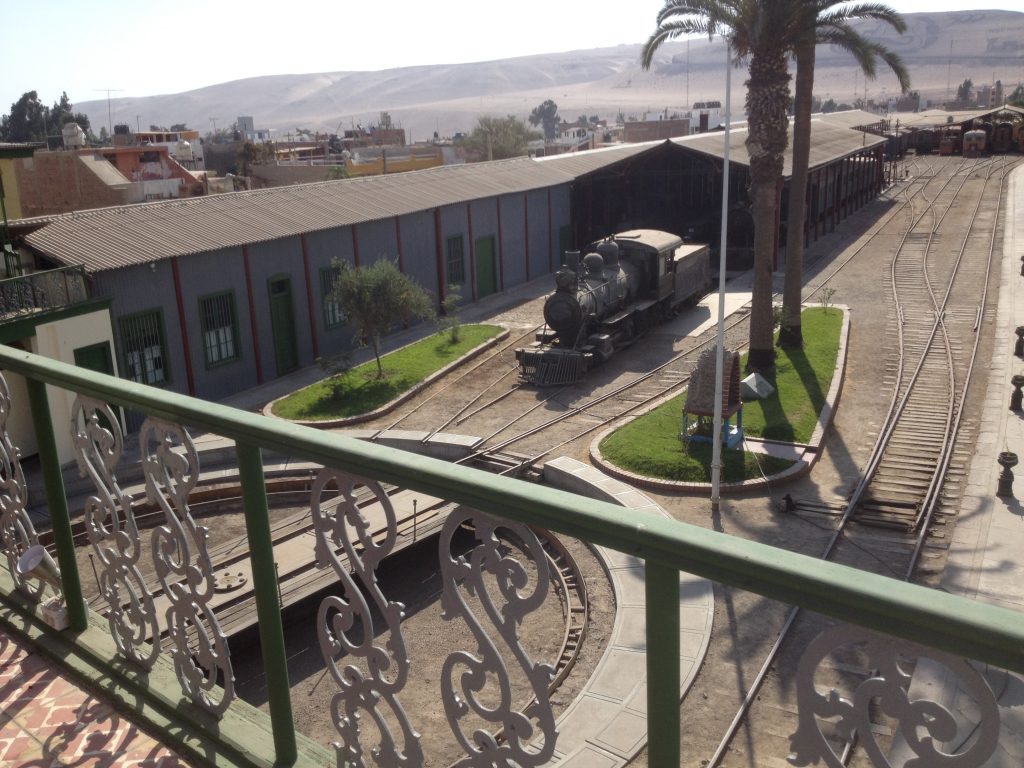
Finally we caught the bus, along with our fellow passengers of mainly Andean origin, the substantially-built and traditionally costumed women carrying huge bundles wrapped in colourful blankets, which would later be split up and stuffed into the overhead racks in the bus. We squeezed into the bus with our colourful fellow travellers, the menfolk of whom soon began dressing in several layers of clothing more than were strictly necessary (at this point we were both still in shorts and t-shirts, and uncomfortably hot). As the bus wound its way up to the Altiplano, the temperature did indeed drop, but I only put on a fleece to remain comfortable until we arrived in Puno at 0300. Once we got off the bus, we soon decided on trousers whilst waiting in the bus station for a decent hour to turn up at our hostel. Whilst waiting, we were approached by a few touts (even at that hour) wanting us to take a taxi, or go to such and such a hostel, or buy tickets to Cusco, but one genuinely helpful chap came to speak to us. OK, he was trying to sell tours, at which he was very persuasive and gave us a good price for two half-day tours for the following day. He also agreed to drive us free of charge to the hostel, as he knew the owners and promised us it would be fine for us to turn up at four in the morning. Indeed it was, and we were ushered straight to our room, where we took the opportunity to crash out, neither of us having slept well in the crowded bus. I have to confess that we did not leave the room again until midday, having slept, showered and generally lazed. This was the first proper period of sleep we had had since leaving Valparaiso.
We spent the afternoon exploring the town, buying our next bus tickets to Cusco, and walking round the bay (a long walk, as it turned out) to see the MN Yavari, the first steam ship to sail on lake Titicaca, and now undergoing restoration with the aim of sailing once again, taking passengers on lake tours. It is a small ship, and the guided tour was very thorough, the best part being the engine room, where the engine had just been put back in working order (although this semidiesel is her second engine, the original llama dung-fired steam engine having been replaced some decades ago.
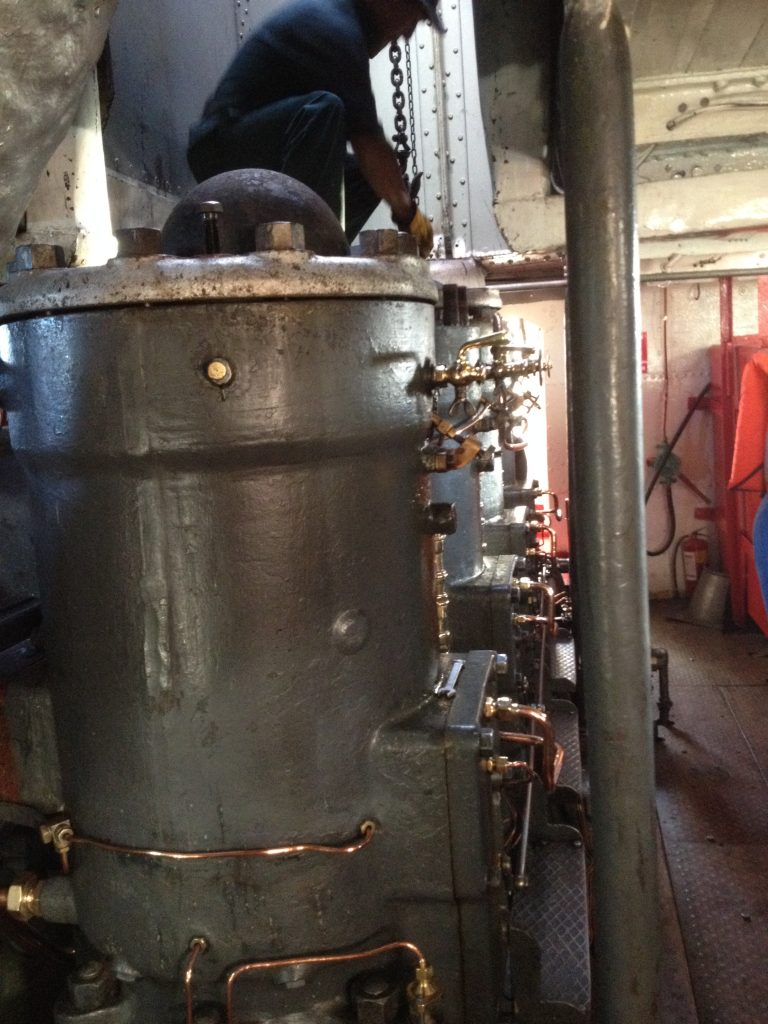
The most remarkable part of the story though is how she was built. Designed and built in kit form in the Thames Ironworks in Birmingham in 1862, she was initially shipped to Arica (then part of Peru) by sea. She was then taken by train to Tacna, before being carried by donkey into the mountains and up to the lake shore, a process which in itself took 6 years, and then being assembled before finally being launched on Christmas Day, 1870.
After seeing the ship we caught a taxi back into town and found somewhere to eat – at which point my appetite failed me. I put this down to the effects of altitude, and we headed back to the hostel for an early night.
The next day was the day for which we had arranged our tours: the morning was to be spent seeing the fascinating man-made floating reed Islands of Uros, just 7km into the lake from Puno. It was a short half-hour boat trip out to the Islands, and we had a very good guide explaining the origins of the inhabitants and how they came to live where they do. Once in amongst the sixty-something islands, the locals selected the island on which we would land, and we disembarked onto the disconcertingly spongy surface, where we were seated in a circle, and shown how the islands were made up of blocks of compacted root matter from the reed beds, which when cut free of the lake bottom, float to the surface, where they are then tied together in rafts using stakes and rope, until after about a month or so the blocks have grown into one another as a consolidated mass. Once at this stage, layers of cut reeds are laid across the raft to form the surface upon which the islanders then build their houses… out of more reeds. Almost everything is made from reeds; other goods they have to barter for in Puno. It is a fascinating way of life, and the tour was well worth taking, but the impression is slightly spoilt by the fact that tourism is now central to their continuing existence, and the visitor is the one who feels exploited, with tips demanded, and goods sold aggressively.
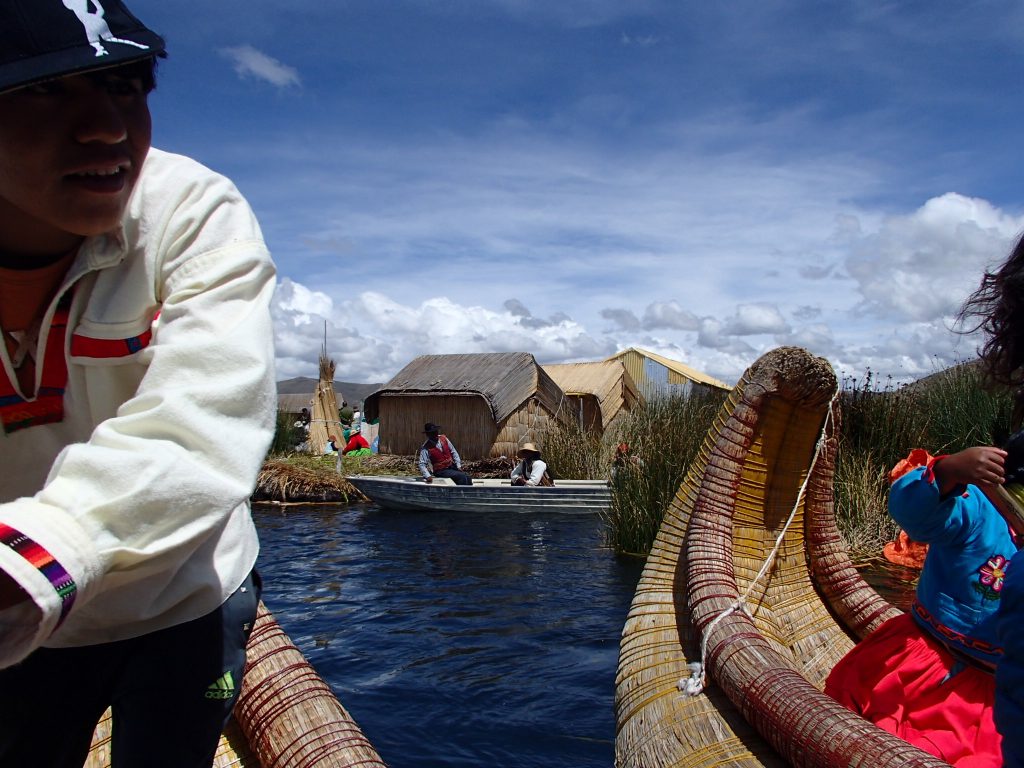
The afternoon’s tour was of a different vein: we took a bus tour to visit the funeral towers at Sillustani, a site about an hour’s drive outside Puno. This site was used by several pre-Incan civilisations to bury their dead, initially in circular pits which then developed into rough stone towers, before the Incas developed the idea using their own technology, building several towers of shaped, carved stone, which reach into the sky as a lasting tribute to their ingenuity.
The trip was finished off with a visit to a typical rural homestead, made up of individual huts occupied by different members of the same family. We were shown some of the staples of the diet of the Altiplano, which included potatoes, both fresh and dried (two varieties, dried by different methods), quinoa and other grains, as well of course as meeting some Llama and Alpaca.
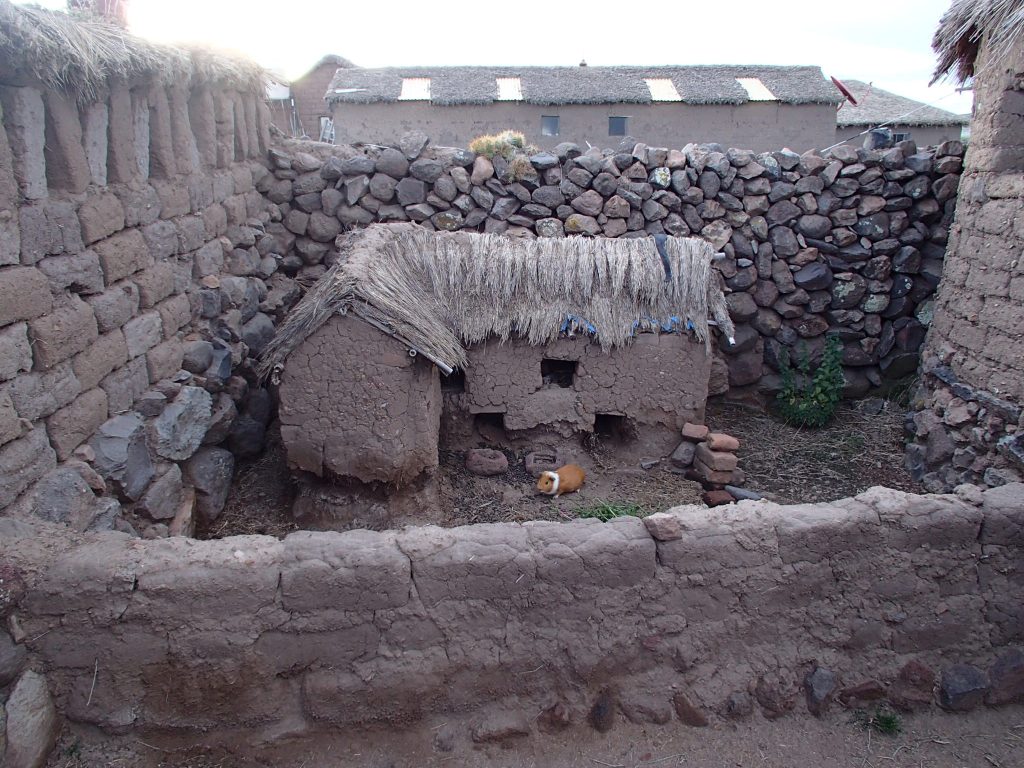
Returning to town, we went to eat, and once again my appetite failed me, and I was unable to finish even a bowl of hearty quinoa soup, tasty as it was.
During the night my lack of appetite developed into a full-blown stomach upset which had me up several times during the night, and this morning convinced me that sitting in a bus for 7 hours to Cusco would not be wise, so we extended our stay in Puno, and after 2 hours sitting in the bus station, managed to find someone who could transfer our tickets to tomorrow morning’s bus, so fingers crossed we’ll both be firing on both cylinders tomorrow!
